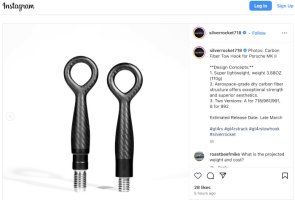Hello Everyone,
I’m curious if anyone here has experience making composite chain plates similar to the ones used in the Duracell project. I’m considering doing this on my 35-2 and would love to hear about any insights, tips, or challenges you’ve encountered with this type of setup.
Any advice, resources, or feedback would be greatly appreciated!
~Johnny
35-2
"Fuzzy Logic"
Duluth MN
I’m curious if anyone here has experience making composite chain plates similar to the ones used in the Duracell project. I’m considering doing this on my 35-2 and would love to hear about any insights, tips, or challenges you’ve encountered with this type of setup.
Any advice, resources, or feedback would be greatly appreciated!
~Johnny
35-2
"Fuzzy Logic"
Duluth MN



